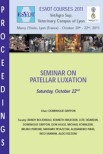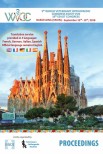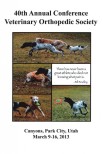Reasons for performing study: The longissimus dorsi is the largest muscle in the equine back and plays an important role in locomotor ability and performance in the horse. In vivo studies suggest that the mechanical function varies between different muscle segments, in part determined by anatomy. It is possible therefore that variations in function reflect variations in the anatomy of the longissimus dorsi along its length.
Objectives: To identify if there are regional variations in muscle architecture of the longissimus dorsi.
Methods: Computed tomography scans were obtained from 8 cadaver backs to identify the cross-sectional area and volume of the muscle. The 3D orientations of the muscle fascicles were quantified in situ by their direction cosines using a magnetic digitisation system.
Results: Mean ± s.e. volume of the muscle was 2.34 ± 0.18 l for each side and mean length of the vertebral column from T4 to L6 dorsal spinous processes was 56.57 ± 2.0 cm. There were significant differences in the cross-sectional area and the moment arm lengths between muscle segments (P<0.05). In the lumbar region, the mediolateral moment arms were 2-3 times greater than the dorsoventral moment arms. There were significant variations in the direction cosines (n = 7129) between muscle segments and between different regions within each segment (P<0.05).
Potential relevance: These observations indicate that the muscle fascicle architecture predisposes the longissimus dorsi to different functions both along its length and between different regions within each segment. Detailed 3D anatomical measures of the structure with in vivo measures of function (back motion and muscle activity) will be investigated in further studies.









